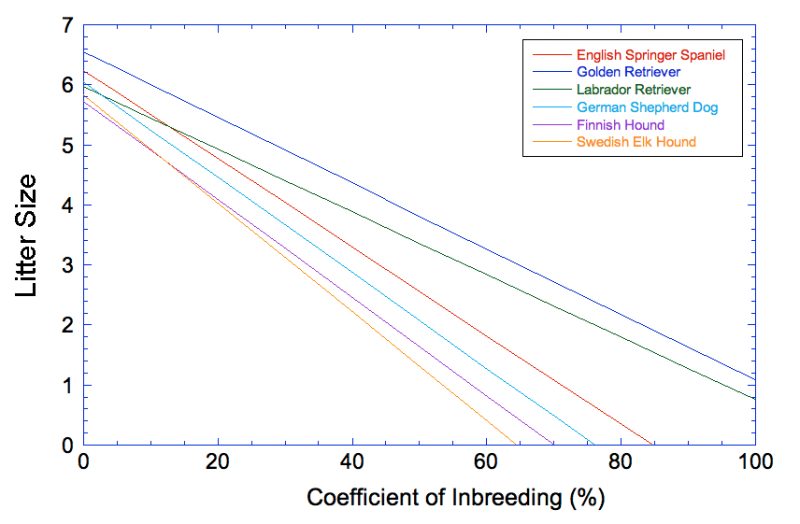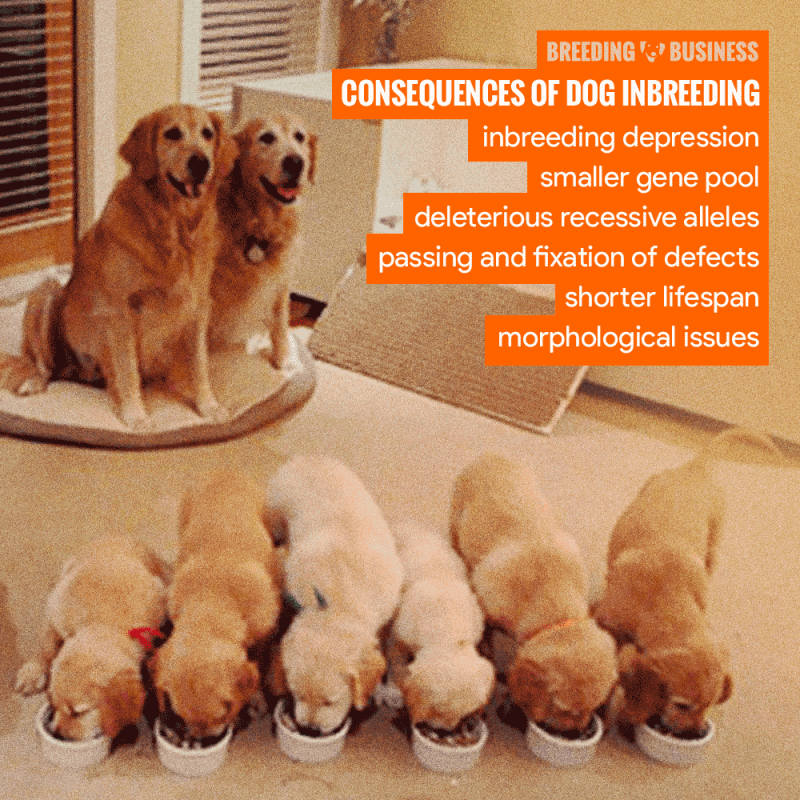The issue of inbreeding within the canine species is one that is of great concern to breeders and pet owners alike. Inbreeding within the canine species can lead to a number of adverse health issues within the resulting offspring, making it important to understand the implications of such a practice. The question of whether a male dog can breed with his daughter is one that is particularly concerning, as this is the most direct form of inbreeding within a given family of dogs. In this blog post, we will explore the potential issues that can arise when a male dog breeds with his daughter, as well as the potential implications for the health and safety of the resulting pup. We will also provide potential ethical considerations from a breeder’s perspective when making this decision. By understanding the risks associated with inbreeding, pet owners and breeders can make an informed decision about the best course of action for the health of their canine companions.
Risks of Breeding Father to Daughter in Dogs
In general, due to the numerous risks involved, it is frequently strongly advised NOT to breed father and daughter dogs.
In fact, The Kennel Club has prohibited this kind of breeding. Although some breeders offer a general defense for mating father and daughter dogs, the results are frequently less than desirable. The risks of father-daughter intermarriage outweigh the advantages. Understanding what transpires during the act of inbreeding of such close proximity is necessary for a better understanding As previously mentioned, a father and daughter’s inbreeding coefficient is extremely close, increasing the likelihood that their subsequent offspring will experience negative outcomes. Before choosing to breed two canines who are closely related, one should weigh the risks.

Due to the lack of gene variation in inbred dogs, close inbreeding has resulted in cases of infertility in dogs. It has been reported that inbred males have lower fertility rates than purebreds, which makes it very challenging for breeders to continue the process. The females also experience more absorbed litters and a higher incidence of giving birth to sick whelps. Furthermore, inbred dogs have a higher mortality rate as well.
Many breeders attempt to improve the traits by mating closely related individuals, but they neglect to consider the serious impact this has on the available gene pool. During routine breeding, gene pools are widened, resulting in a variety of available traits in a species that promotes growth and variety along generational lines. Close inbreeding, however, prevents the gene pool from growing and keeps it extremely small. Small gene pools are more susceptible to genetic disorders.
While occasional mild aggression in dogs is common, closely bred dogs frequently exhibit abnormal behavioral symptoms. These dogs typically don’t show affection to other dogs, their own breeders, or their owners. Additionally, they frequently exhibit much greater fear in circumstances that do not affect purebred dogs. They exhibit higher levels of aggression and irritability, and they are more impulsive and anxious. Additionally, inbred pets tend to be less intelligent as well.
Inbreeding has a high rate of passing on abnormal or undesirous genes to the offspring. It is more likely to isolate a congenital defect than it is to isolate beneficial genes. This enables recessive alleles to be more prevalent in inbred specimens which can often lead to inbreeding depression and genetic diseases.
Because both the father and mother have a higher chance of carrying the same set of these genes than in a typical breeding situation, such alleles are more likely to manifest in close matings. Many conditions that affect the immune system, abnormal faces and bodies, eye diseases, and even cancer can manifest these defects. Because the pups had grown to have such large heads as a direct result of this type of close linebreeding, many of the dams had to have C-sections.

Breeders may believe they are in the clear early on only to discover their dog is seriously ill later on. This is one of the distressing aspects of some of these congenital defects because they frequently do not manifest until later.
Risks & Consequences of Breeding Father to Daughter Dogs
Although inbreeding can be beneficial, the risks outweigh them. The Kennel Club has banned this inbreeding, acknowledging the likelihood of the subsequent offspring inheriting negative consequences.
These risks include:
Infertility in father-and-daughter dog breeding has increased. This is due to the inbred dogs’ lack of gene variation, which is represented by the variations in DNA sequences in their genomes.
According to reports, male inbred puppies have lower fertility rates than purebreds because the mother and father share the same genes.
But what about the females? It turns out that they are more likely to have an absorbed litter. When fetuses pass away and disintegrate inside a pregnant woman’s womb, it is known as puppy absorption. The remains undergo enzymatic breakdown.
The females also experience dystocia, a condition that causes them to have challenging or unusual labor. When the litter is larger than average utero puppies or has congenital disabilities, inbred females experience dystocia. Due to this condition, pregnant dogs with these females frequently give birth via C-section.
Inbred female dogs may also give birth to sickly puppies that have a high mortality rate.
A population’s gene pool is the genetic diversity present at any given time. Animals with a large gene pool have extensive genetic diversity. They are capable of overcoming obstacles and stresses posed by their surroundings. Due to the size of the gene pool, there is room for development and variety across generational lines.
Inbred dogs, however, do not enjoy this. Instead, due to their limited gene pool, they are vulnerable to extinction when faced with environmental stresses. The potential for the gene pool to expand is harmed by close inbreeding, and generational lines become more vulnerable to inherited diseases.
Did you know that inbreeding a dog for more than six generations reduces the genetic variation by over 90%? This puts the inbred dog at risk in case of environmental changes or diseases. They are less likely to survive these changes.
Congenital disabilities are structural or functional abnormalities that appear before birth. Breeding a father dog with a daughter can result in the litter receiving unwanted and abnormal genes. How?.
Recessive genes are more likely to predominate in the offspring when there is inbreeding. This is due to the fact that the genes of the mother and father both contain a similar set of alleles.
As a result, it is common to see inbred puppies with skeletal deformities, cancer, abnormal bodies and faces, and eye disorders.
The puppies’ average lifespan and quality of life are affected by these flaws. Additionally, owners must decide whether to euthanize their pets or raise money for necessary medical treatments.
Unfortunately, some congenital disabilities are visible after birth. Some owners claim to have raised a healthy dog only to discover it had a congenital disability when it later became very ill.
Consider the Cavalier King Charles breed as an illustration to better comprehend how inbreeding results in health issues. This breed is prone to heart problems. In actuality, Mitral Valve Disease (MVD) is the primary cause of death in Cavalier King Charles dogs.
So, assume you inbreed this type of dog. Because both the mother and the father are MVD-prone, their children will have a worsened version of the condition. The results? A sickly litter with a high mortality rate.
In addition, inbred dogs tend to display abnormal behavioral issues. For example, they are less affectionate, more anxious and impulsive, and more aggressive and irritable. In comparison to purebred dogs, they might also be fearful and less intelligent.
Could It Be Good?
Inbreeding, also known as line breeding, is a technique used to highlight a dog’s positive traits—which, let’s face it, are all positive!
Your dog might, for instance, have a particular nose shape, a distinctive color, or even a special skill!
Working in a specific field, such as dog shows, hunting, or being a breeder, is a common reason for using this technique.
It might also be a strategy to guard against undesirable qualities in the next of kin, like a propensity for illness.
Seemingly, these points are the only ones of benefit. The negative aspects far outweigh any potential benefit.
But it’s important to realize that there is a right way to line-breed, and that way is very different from the wrong way. For instance, it is evident that dogs were inbred for a very long time.
Additionally, we are aware that field spaniels and cocker spaniels share a common ancestor.
Dogs were historically bred by us and shaped by our influence. The friendship grew after we met with their very first relatives.
When dangers like strangers or animals were present on the homestead, dogs would warn their owners.
In the 1800s, records of specific litters and bloodlines were kept in an effort to breed dogs that could perform specific tasks (such as tracking, herding sheep, and hunting). ).
This represented the infancy of what we now know as selective breeding.
Although breeding dogs for these purposes is morally dubious in and of itself, without it, we wouldn’t have the varieties of dogs that we know and adore today.
However, the gene pool has undoubtedly changed as time has gone on.
Due to the expansion, the likelihood of close-relative inbreeding and the resulting genetic disorders and illnesses have been reduced.
Utilizing a test called a coefficient test is regarded as the proper procedure for inbreeding dogs. The resultant number will show how similar these dogs are to one another.
Inbreeding should be avoided due to the risks since anything over 25% is regarded as a close relative.

FAQ
Can the daughter breed with the father dogs?
Never crossbreed a father dog with its daughter. Although there is a chance of getting a healthy dog, there is also a greater chance of getting a dog with serious health problems. Reduced genetic diversity, shorter lifespan, and increased susceptibility to hereditary diseases are all effects of inbreeding.
What happens if a mother and son dog mate?
Therefore, there is a 25% chance that offspring from a mother-son union will receive two undesirable copies of the mutations that were passed on to the son. When compared to an outbred dog, this risk is more than 100 times higher. Inbreeding in dogs can lead to serious problems.
Can a male dog breed with his sister?
When a brother and sister dog mate and produce puppies, inbreeding occurs. In theory, dogs can mate with any member of their close genetic family. However, instances of sibling mating are far more common. These incestuous relationships are more common than most people realize, believe it or not.
Can a male dog mate with his granddaughter?
Your question can be answered briefly by saying “yes”; it has already been done.
